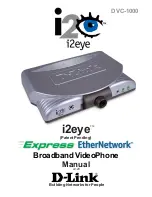
4-18
Chapter 4
Business Features Package
Call Intrusion (Barge In)
. This feature operates in the same manner as in a non-networked switch.
Call Offer/Call Waiting (Camp On)
. This feature operates in the same manner as in a non networked
switch. When a called station is busy, the caller can press a Camp-On key and appear as a ringing call
on the second call key. The Auto Camp-On feature will not work on calls across a network link if set to
ON in MMC programming.
Call Transfer
. Calls answered in one network node can be transferred to a station or station group in
another network node.
Transfer Retrieve
. Calls on Transfer Hold during a screened transfer can be retrieved by pressing the
Call key for that call.
Transfer Recall
. Calls transferred across a network link will recall to the transferring station after the
originating system’s transfer recall timer expires. After recalling, if not answered prior to the system’s
attendant recall timer expiring, the call will recall to the system’s designated operator group. Attendant
recalls will not recall to a ‘Centralised Attendant” (see below).
DDI with Pass Through
. Incoming DDI calls can be routed through one switch across a network link
to be processed by the DDI table of the destination switch.
Do Not Disturb (DND)
. This feature operates in the same manner as in a non-networked switch.
There is an option in MMC programming to determine the type of DND tone sent across the network
link.
Caller ID (CID)
. CID in the forms that are currently available (PRI Name and Number and BRI
Number) will be transported across the network link with the original call.
Centralised Attendant
. This feature allows a user in any switch to dial “0” and ring at the designated
Central Attendant group. Each system on the network requires its own designated attendant group for
local usage and recalls.
Internal Calling/Uniform Dialling Plan
. Station to station and station to group calls can be made
across the network link without having to dial an access code for a call within the network. LCR can
also be programmed to route calls across a network link to access local trunks in another networked
system.
Centralised Voice Mail with Message Waiting Lights
. This feature will operate only with Cadence,
SVMi-8 or SVMi-16 Voice Mail systems. Users in one node can call forward to the voice mail group in
a different switch and messages left in that switch will be indicated on the VMSG key in the originating
switch. Messages can be returned to voice mail by pressing the VMSG key.
Off Premises Extensions (OPX)
A single line (tip and ring) extension from a 4SLI card only may be connected to telephone
company-provided OPX circuits to remote locations.
Operator Group
The operator group can contain up to 32 stations to answer incoming calls. Calls to this
group can be set for distributed, sequential or unconditional ringing. Operators can use the
In/Out of Group feature to meet flexible operator requirements. Operator groups are
selectable per ring plan.
















































